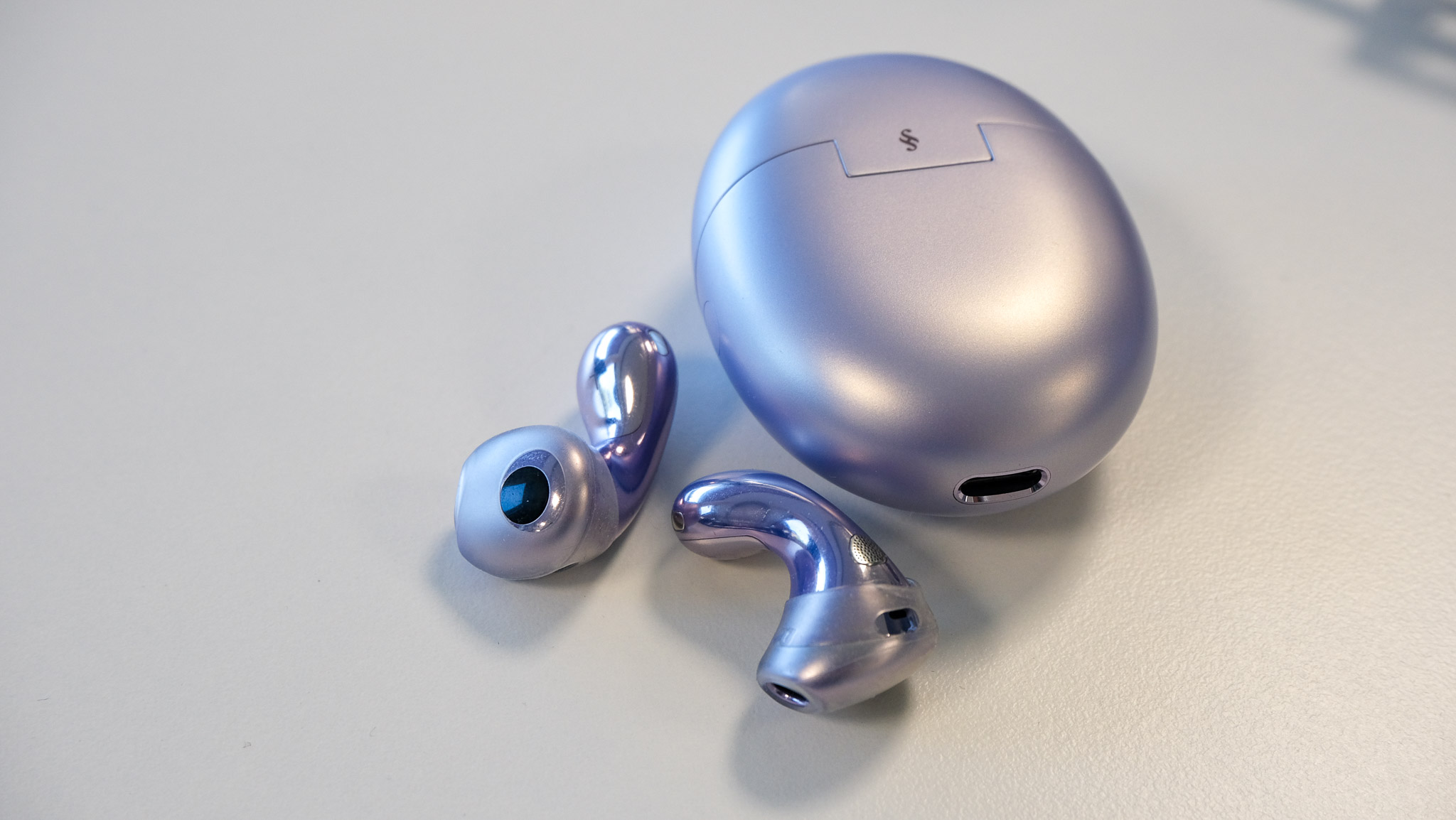I completely forgot that I reviewed the Huawei Freebuds 5 a couple of years ago, so I was a bit puzzled when the brand reached out about possibly testing its latest noise-cancelling headphones. This turned into excitement as soon as I tried the new buds!
I visited Huawei’s headquarters in Shenzhen, China, last month, where we were briefed about the company’s latest sensing platform launch. At the same time, we were also offered a chance to try the Freebuds 6 and to compare their sound quality with two high-end speakers set up in the briefing room.
To my surprise, both sounded almost identical, which piqued my curiosity. The buds' predecessors performed okay, but I can’t say I was blown away by them. Sound was clear, but the fit was a bit hit-and-miss for me due to the seamless curve design.
ANC was also a weak point. While some open-ear headphones, such as the Apple AirPods 4, can provide some noise cancellation, the Freebuds range leaves the ear canal more exposed, which inevitably lets in more ambient noise.
The new buds address almost all of these issues, some better than others.
Sound quality is greatly improved thanks to the dual-driver setup, featuring an 11 mm dynamic bass driver plus a planar diaphragm tweeter. This extends the frequency range from 14 Hz to 48 kHz and provides a richer, more balanced sound.
The drivers are paired with Huawei’s new Bass Turbo 2.0 and triple adaptive EQ tuning, all managed within an open-fit design through a smart three-part internal structure.
The Freebuds 6 are the first open-fit Huawei buds to support 2.3 Mbps lossless streaming via the L2HC 4.0 codec (HWA certified) when used with a compatible EMUI 15+ device (Huawei Audio app on a Samsung/Huawei smartphone), delivering audiophile-grade sound wirelessly.

(Image credit: Matt Kollat/ T3)
On the calls and comfort front, the FreeBuds 6 are lighter (9 %) and sleeker (12 %) with shorter stems for extended wear. They feature advanced open-fit ANC with three microphones plus a new Voice Pickup Unit (VPU), capable of reducing noise up to 95 dB and robustly handling wind speeds up to 8 m/s, all thanks to generative AI-driven processing.
Battery life is also improved: 6 hours per bud (when ANC is off), up from 5 hours, and 36 hours total with the case (up from 30 hours). They also offer rapid charging, just 5 minutes for 2.5 hours of playback, along with wireless and USB-C support.
As I mentioned above, the sound quality of Freebuds 6 has improved dramatically. The headphones sound clearer and louder even without a Samsung or Huawei smartphone in sight (I tested them with my iPhone 16 Pro).
Some of the instrumental songs I conjured up from the bottomless pits of my Spotify playlists came across almost ethereal: smooth, shimmering highs danced above a surprisingly full low-end, with vocals and ambient textures sitting perfectly in the mix.
Sadly, ANC performance is still poor, at best. The Freebuds 6 leave the ear canals quite exposed, which, no matter how sophisticated the algorithm, will let in a lot of ambient sound. I tried to silence the cabin noise on the train on the way to the office to no avail.
Cranking up the volume helps, but it’s not the same as having a powerful enough ANC to quieten the world. It’s like shouting over a crowd instead of asking them to quiet down – it works, but it’s not the real thing.
The shape of the buds is less of a liability this time around. The buds still sport the same curvy form factor, but it’s more refined, meaning the Freebuds 6 sit more comfortably in your ears, even if you move your head around vigorously.
Call quality is yet to be tested, but the three-mic setup gives me confidence that it will perform well. Battery life also seems on point – great news!
Will the Huawei Freebuds 6 push Apple AirPods Pro 2 out of my ears? Maybe not, but it’s possible it’ll be a great alternative for office use. Full review coming soon.









